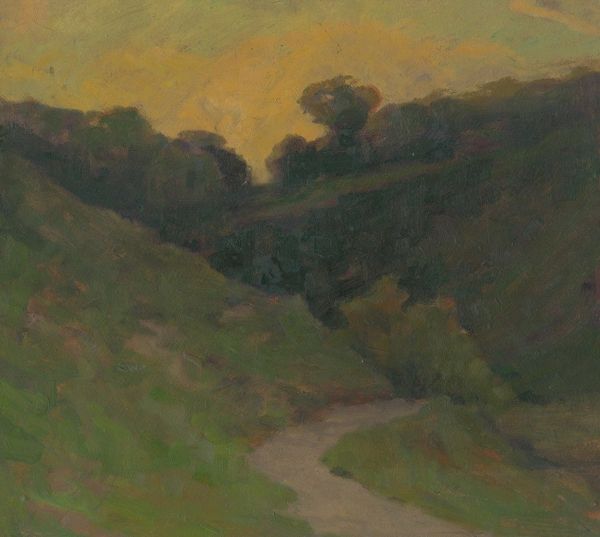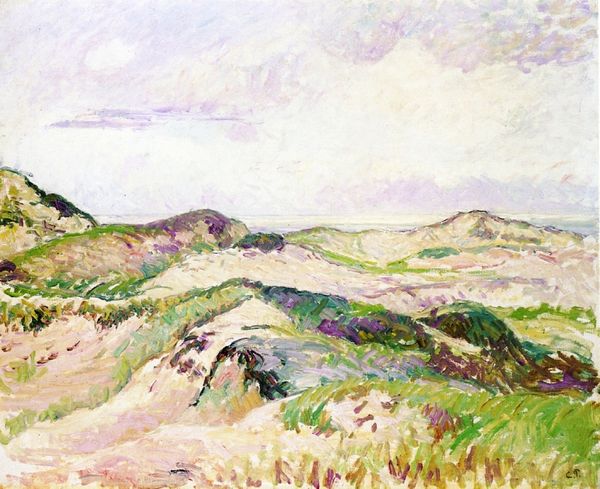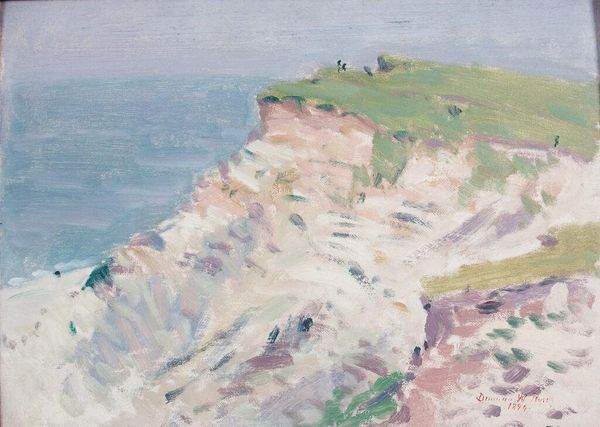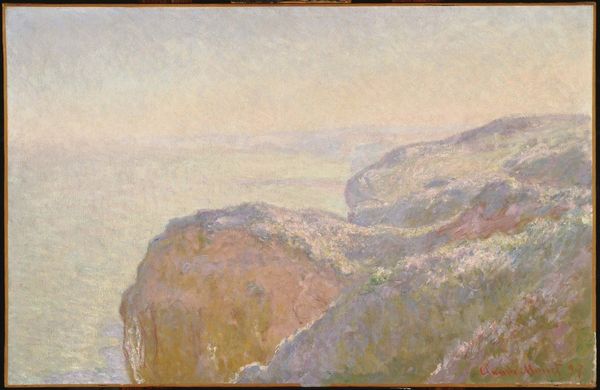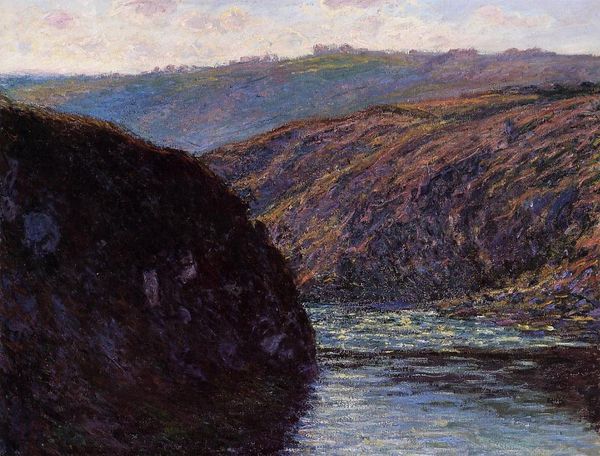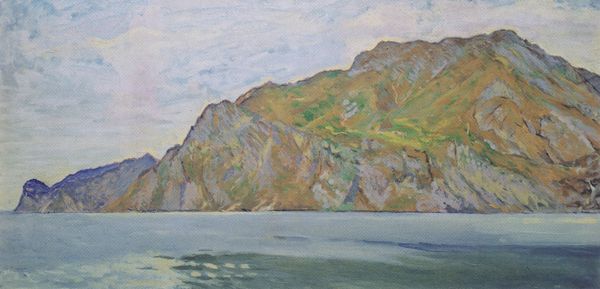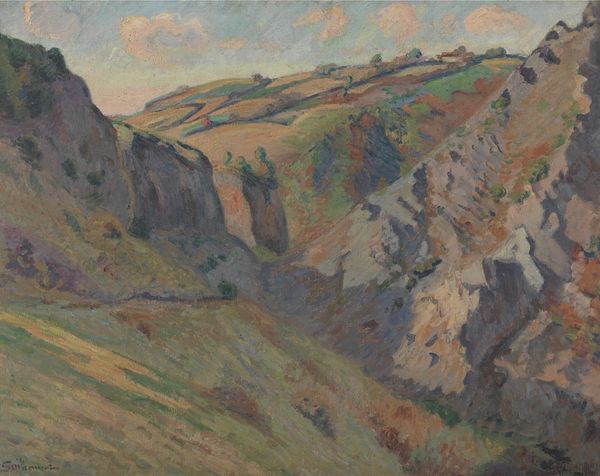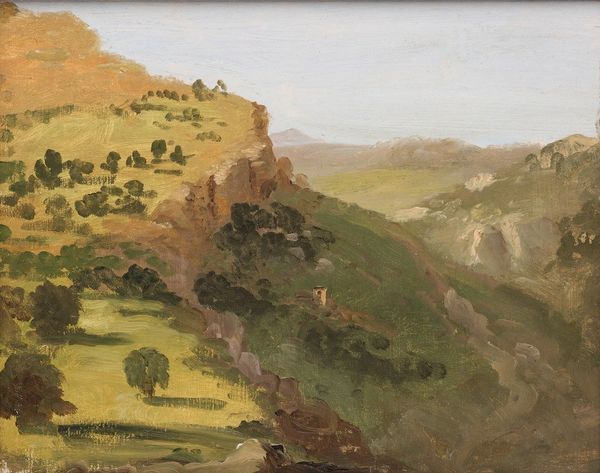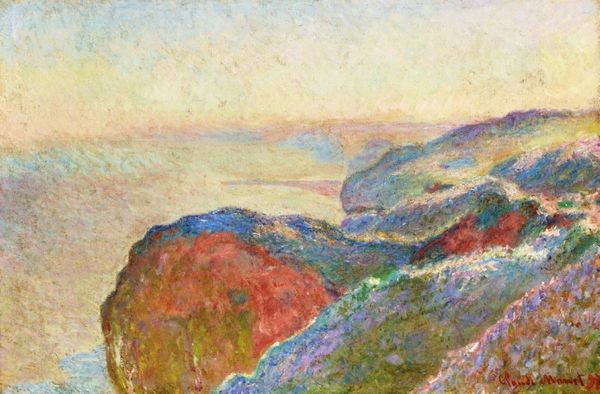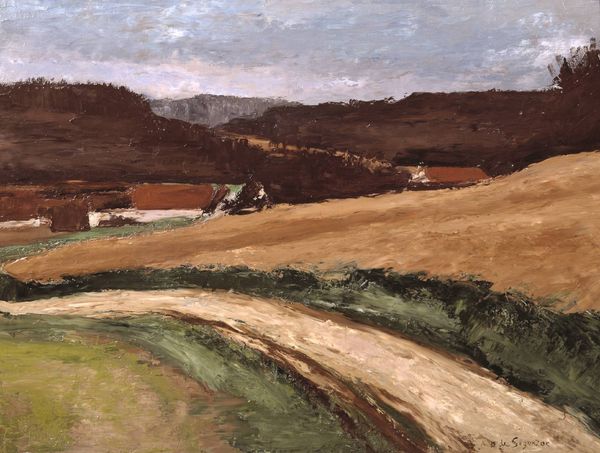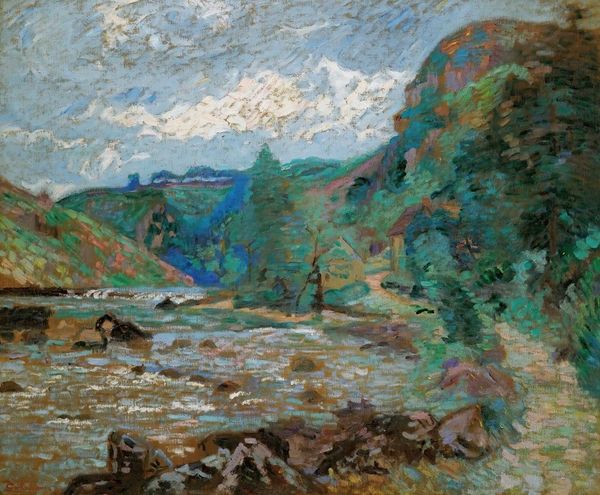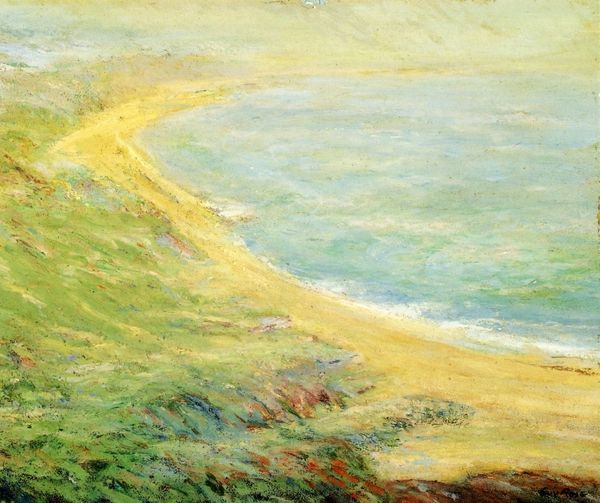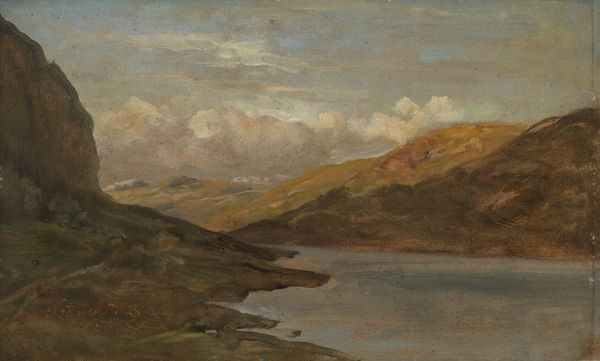
#
landscape
#
impressionist landscape
#
possibly oil pastel
#
oil painting
#
acrylic on canvas
#
landscape photography
#
naturalistic tone
#
seascape
#
watercolor
#
warm toned green
#
digital portrait
Copyright: Public Domain: Artvee
Editor: Here we have Carl Moll's *Donauansicht*, or *View of the Danube*. The textures look really rich; it almost feels like I can see the brushstrokes building up the hillside. How do you approach a piece like this? Curator: Immediately, I'm drawn to consider Moll's working conditions. Look at how he applied paint in visible layers. What type of brushstrokes can you see, and what type of brush do you imagine Moll was using? Are those deliberate marks made to depict materiality of the landscape or spontaneous expressions of individual craftsmanship, a sign of alienated labor within the commodified art world? Editor: It's interesting to think about the 'labor' of the artwork so directly. What about the commercial aspect; how did these constraints effect his craft? Curator: Consider how the surface tension of the medium – presumably oil – dictates his application of pigment, then ponder on the broader economic systems that fostered the painting and, ultimately, the price society places on this work today. How accessible was that kind of paint at this time, and who benefitted from its manufacturing? Also what effect has industrialisation along the Danube riverbank affected the community represented? Editor: That definitely changes my perspective! I was caught up in the aesthetic qualities, but now I'm wondering about the social context. Curator: Exactly. Instead of just viewing the landscape, question its making, and the systems, like galleries, that keep its production going. Does examining it from a materialist position change the reading of it? Editor: It does! It goes from being a nice landscape to being evidence of complex material and economic relationships, something much deeper and interconnected. Curator: And perhaps reveals underlying narratives about labor, consumption, and our relationship with the environment and art itself.
Comments
No comments
Be the first to comment and join the conversation on the ultimate creative platform.
